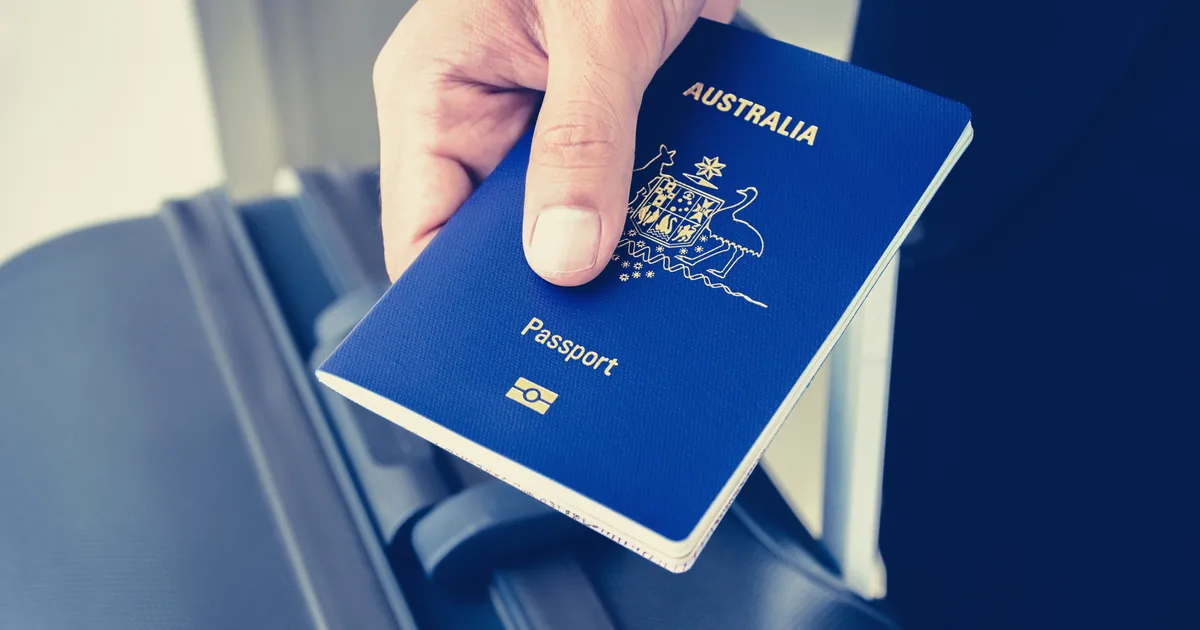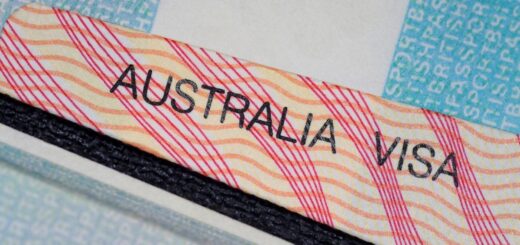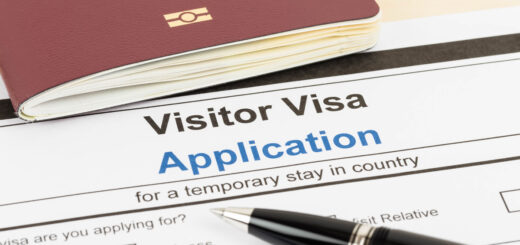How to Reside Permanently in Australia: A Complete Step-by-Step Guide to Building Your New Life
Published · Updated

Residing permanently in Australia has become one of the most desired migration goals in the world, and it is easy to understand why. The country consistently ranks among the best places to live, offering a high standard of living, a stable economy, excellent healthcare, world-class education, and a welcoming multicultural society. Many people around the world dream of calling Australia home, whether for better job opportunities, a safer environment for their families, or the freedom to live in a country known for balance and opportunity.
Yet, as appealing as this dream sounds, the process of obtaining permanent residency can seem daunting for first-timers. The application involves several stages, requirements, and verifications. But here is the thing, with proper planning, accurate information, and a clear step by step strategy, you can successfully navigate the process without too much stress.
Let us break down what it truly means to reside permanently in Australia, the different paths to get there, and how you can make your transition smooth and successful.
Table of Contents
ToggleUnderstanding What It Means to Reside Permanently in Australia
To reside permanently in Australia means you have been granted the right to live, work, and study in the country for an indefinite period. You are no longer a temporary resident or on a work visa that expires. Instead, you become a permanent resident with nearly all the rights and privileges that citizens enjoy.
As a permanent resident, you can access Australia’s public healthcare system through Medicare, enroll your children in public schools, and work for any employer without restrictions. You can also sponsor eligible family members to join you in Australia, travel freely in and out of the country, and after a few years, apply for citizenship if you meet the eligibility requirements.
Permanent residency is not just a legal status, it is a gateway to a new life. It gives you the security of knowing you can build a stable future without worrying about visa renewals or restrictions. You can buy property, start a business, and fully integrate into Australian society.
Why People Choose to Reside Permanently in Australia
Australia’s appeal goes beyond its beaches and sunshine. It is about quality of life, opportunity, and freedom. The country’s strong economy offers excellent career prospects for skilled professionals, particularly in industries like healthcare, engineering, information technology, construction, and education. The government values skilled migration and welcomes people who can contribute to national growth.
Australia also has one of the best healthcare systems in the world, free or subsidized through Medicare. Education is another strong draw, with top ranked universities and public schools that provide world class learning.
Safety, political stability, and social inclusiveness are other reasons people choose to settle in Australia. It is a country that respects diversity, supports equality, and offers a clean, organized environment for raising families.
The Major Pathways to Residing Permanently in Australia
There are multiple ways to achieve permanent residency in Australia. The best path for you depends on your background, qualifications, and reasons for moving.
The most common pathways are:
The Skilled Migration Program for professionals and tradespeople whose occupations are in demand in Australia.
Employer Sponsored Visas for those who have an Australian employer willing to sponsor them for permanent work.
Family or Partner Visas for individuals with close family members or partners who are Australian citizens or permanent residents.
Business or Investor Visas for entrepreneurs, investors, or business owners who can contribute to the Australian economy.
Let us explore each of these pathways more closely.
The Skilled Migration Program is the most popular option for individuals applying independently. It operates on a points system that evaluates your age, English proficiency, work experience, qualifications, and other factors. The key visa subclasses under this program include the Skilled Independent Visa subclass 189, the Skilled Nominated Visa subclass 190, and the Skilled Work Regional Visa subclass 491.
If you score high on the points test and your occupation is listed on the Skilled Occupation List, you stand a strong chance of receiving an invitation to apply.
The Employer Sponsored Visa route works well for people already working in Australia or those with a job offer from an Australian company. Employers can nominate skilled workers for permanent roles through visas like the Employer Nomination Scheme subclass 186. This pathway provides a clear route to permanent residency once you meet the work and sponsorship conditions.
Family and Partner Visas allow Australians to reunite with their loved ones. If you are married to, in a de facto relationship with, or engaged to an Australian citizen or permanent resident, you may be eligible for a Partner Visa, which can lead to permanent residency. Similarly, parents, children, and other close relatives may qualify for Family Visas.
Finally, Business and Investor Visas cater to individuals who want to invest or start businesses in Australia. This path benefits both the applicant and the country by encouraging investment and economic growth.
Steps to Achieve Permanent Residency in Australia Without Too Much Stress
Getting permanent residency might sound complex, but if you approach it strategically, the process becomes manageable. Below is a clear sequence of steps you can follow.
Step 1: Determine Your Eligibility
Before you apply for anything, find out which visa program you qualify for. Check your occupation on the Australian Skilled Occupation List. If your job is in demand, you are already in a strong position. Review the eligibility criteria for each visa category carefully, including age limits, work experience, qualifications, and English language requirements.
If you are applying for a points based visa, calculate your points using the government’s online points calculator. Generally, you need a minimum of 65 points to qualify, but the higher your score, the better your chances.
Step 2: Get Your Skills Assessed
A skills assessment is mandatory for skilled migration applicants. It verifies that your qualifications and work experience match Australian standards. Each profession has its own assessing authority, for example Engineers Australia for engineers or the Australian Computer Society for IT professionals. Submitting a complete and accurate assessment application is crucial to avoid delays.
Step 3: Take an English Language Test
You will need to prove your English proficiency through tests like IELTS, PTE Academic, or TOEFL. Scoring well boosts your overall points and improves your application strength. Preparing properly for the test and aiming for a high score can make a big difference in your chances of success.
Step 4: Submit an Expression of Interest
Once your documents are ready, submit an Expression of Interest through Skill-Select. This online system allows you to express your intention to migrate and be considered for invitations. Include all accurate details about your skills, experience, and background.
Your Expression of Interest will be ranked against others in the pool, and if your profile meets the required points and occupation demand, you will receive an invitation to apply for a visa.
Step 5: Receive an Invitation and Apply for the Visa
After receiving an invitation, you have a limited time to submit your full visa application. Gather and upload all your documents, including proof of identity, education credentials, work records, and character certificates. It is important to submit accurate and complete documentation to avoid processing issues.
Step 6: Complete Health and Character Checks
Australia has strict health and security standards. You will need to complete medical examinations and submit police clearance certificates from all countries where you have lived. These checks ensure you are healthy and of good character before being granted residency.
Step 7: Wait for a Decision and Prepare for Your Move
Once your application is in, the waiting period begins. Processing times vary depending on the visa type and your situation. While waiting, start planning your relocation. Research which Australian city best suits your lifestyle and career goals. Understand the cost of living, local communities, and job opportunities.
Step 8: Receive Your Visa Grant and Start Your New Life
When your application is approved, you will receive a visa grant letter confirming your permanent residency. At that point, your journey officially begins. You can now live, work, and study in Australia without restrictions, access Medicare, and enjoy all the benefits that come with being a permanent resident.
Settling Down and Building a New Life in Australia
Residing permanently in Australia is not just about visas and documents. It is about creating a fulfilling life in a new environment. Once you arrive, focus on adjusting smoothly.
Start by finding suitable accommodation in a neighborhood that fits your lifestyle. Enroll in Medicare for healthcare access, open a local bank account, and get familiar with transportation options. You will also want to apply for a Tax File Number to work legally and file taxes correctly.
If you have children, explore schooling options early. Public schools in Australia are excellent, and you will also find a variety of private and international schools.
Building social connections is another key part of settling in. Join community events, connect with fellow migrants, and participate in local activities. Australia is welcoming and diverse, so you will find people from every corner of the world who have gone through similar experiences.
Transitioning from Permanent Residency to Citizenship
After a few years as a permanent resident, you may be eligible to apply for Australian citizenship. Generally, you must have lived in Australia lawfully for four years, including at least one year as a permanent resident.
Becoming a citizen gives you full rights, including voting, running for public office, and obtaining an Australian passport. It is a proud moment that signifies your full integration into the country.
Overcoming Common Challenges
Even with preparation, you may face challenges along the way. Some applicants struggle with low points, documentation delays, or confusion about visa subclasses. To avoid these issues, take time to research thoroughly and if necessary, consult a registered migration agent. They can guide you through the paperwork, interpret policy changes, and ensure your application meets all requirements.
Adjusting to life in a new country can also take time. Be patient with yourself as you adapt to cultural differences, workplace norms, and new routines. The key is to stay open minded and proactive.
Conclusion on Residing Permanently in Australia
Residing permanently in Australia is more than a visa status. It is a life changing opportunity that represents stability, growth, and the chance to belong to a country that values equality, innovation, and community.
The process can feel overwhelming at first, but if you take it step by step, stay organized, and follow accurate guidance, you can achieve permanent residency without unnecessary stress.
Australia offers endless possibilities for those willing to build a future there. Whether you are moving for work, study, or family, the journey is worth it. With dedication and a clear plan, you can transform your dream of residing permanently in Australia into a lasting reality.













